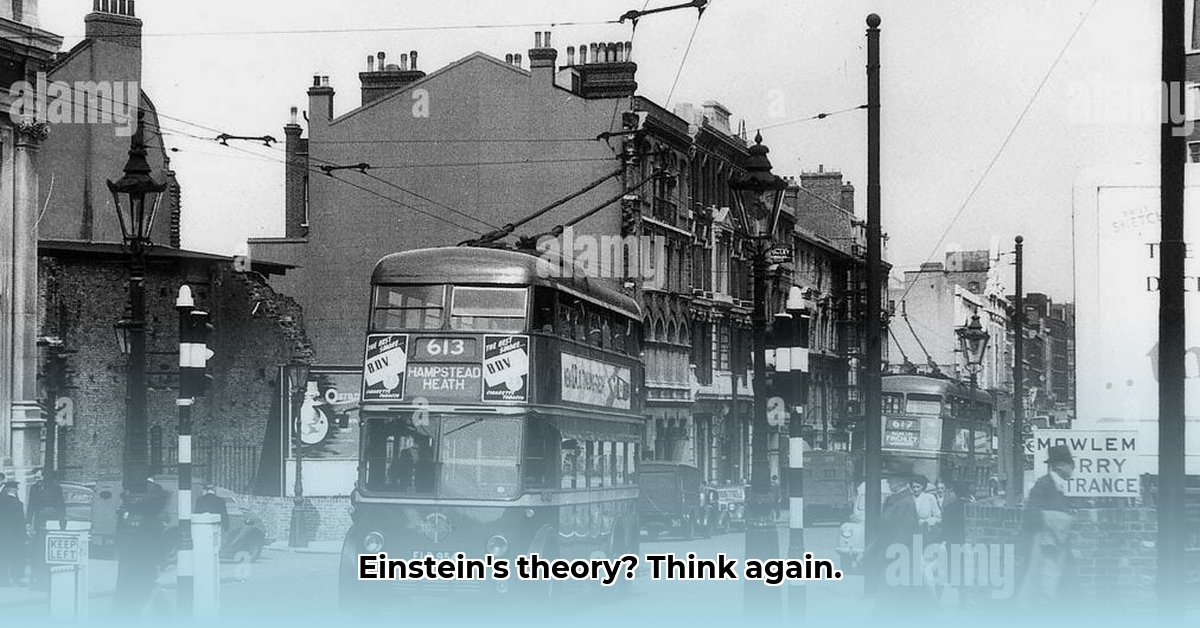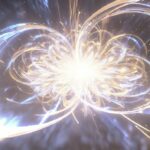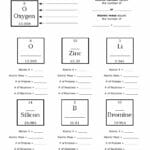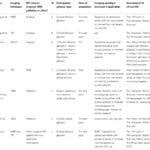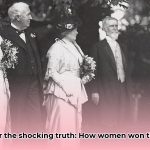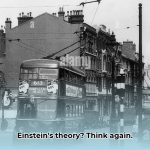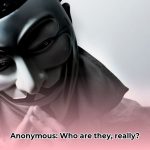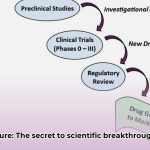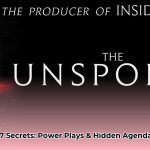The double-slit experiment—a cornerstone of quantum physics—demonstrates the perplexing wave-particle duality of matter. Light, and even individual particles, can exhibit properties of both waves and particles, a phenomenon that has baffled scientists for nearly a century. Recently, MIT physicists achieved a significant breakthrough by conducting an ultra-precise version of this experiment. This article demystifies their work, explaining its importance and implications for our comprehension of the quantum world. Learn more about [quantum entanglement](https://www.lolaapp.com/quantum-entanglement-einstein-s-spooky-action-at-a-distance-explained) to better understand this phenomenon. Prepare to delve into the bizarre and fascinating realm of quantum mechanics!
The Quantum Enigma: Wave or Particle? Exploring the Double-Slit Experiment
The double-slit experiment has perplexed physicists for almost a century, challenging our classical understanding of the universe. Imagine shining a beam of light through two closely spaced slits. Classically, one would expect to see two distinct bright lines corresponding to the slits on a screen behind them. However, the light forms an interference pattern—a series of alternating bright and dark bands—as if the light waves are interfering with each other, similar to ripples in a pond. This indicates that light behaves as a wave.
The real enigma arises when scientists attempt to observe the light’s path. When detectors are placed at the slits to determine which slit each photon passes through, the interference pattern vanishes. Instead, two distinct bands appear, indicating that the light is now behaving as a stream of individual particles. The very act of observation seems to alter the light’s behavior, forcing it to choose between being a wave or a particle. This wave-particle duality lies at the heart of quantum mechanics, the branch of physics that governs the behavior of matter at the atomic and subatomic levels.
Albert Einstein, a pioneer of modern physics, struggled with this concept. He sought to reconcile quantum mechanics with classical physics, suggesting that hidden variables might explain the seemingly random behavior of light. Niels Bohr, another central figure in the development of quantum mechanics, proposed a different interpretation. He argued that the act of observation fundamentally influences the quantum system, and that light does not possess definite properties until measured. This difference in opinion sparked intense debates and propelled further research into the nature of quantum reality. How can we reconcile the classical and quantum worlds?
The recent experiment at MIT offers valuable insight into this debate. Unlike previous experiments that employed ordinary light and physical slits, the MIT researchers used a novel approach. They utilized ultracold atoms, cooled to temperatures near absolute zero, to serve as incredibly precise, microscopic slits. They also used individual photons, ensuring that only one particle of light interacted with the atoms at a time. This setup allowed them to minimize external disturbances and probe the experiment with unprecedented precision.
Earlier experiments were susceptible to imperfections, such as vibrations or irregularities in the slits, which could obscure the quantum effects. The MIT team’s innovative method substantially reduced these interfering factors, providing a clearer picture of the quantum phenomenon. Their findings confirmed that wave-like interference patterns vanish when scientists track the photons as they pass through the atomic slits, aligning with Bohr’s interpretation of quantum mechanics.
This experiment provides substantial evidence that the act of measurement fundamentally alters the behavior of quantum systems. This concept challenges our everyday intuitions and underscores the strangeness of the quantum world. Understanding how observation shapes the quantum realm is critical to further develop quantum technologies and our overall knowledge of reality at the most basic level. Is there an objective reality independent of observation?
The implications of this refined double-slit experiment extend beyond fundamental physics. It provides opportunities for several fields, including:
- It reinforces the idea that observation plays a central role in the outcomes of quantum investigations.
- This research is valuable for quantum computing research and related applications, especially those which involve qudits.
- The Sorkin parameter could have applications in quantum cryptography due to highlighting interactions between multiple paths.
The MIT experiment underscores the counterintuitive nature of the quantum world and provides a foundation for future research. While the experiment supports Bohr’s perspective, other interpretations of quantum mechanics continue to be investigated. Future research to solve quantum mechanics may yield valuable insights, deepening our view of reality at its core. This experiment represents a step into a wider quest to understand quantum mechanics.
Quantum Computing and Quantum Cryptography: Applications of MIT’s Refined Double-Slit Experiment
Key Takeaways:
- The refined double-slit experiment highlights the profound influence of observation on quantum mechanics and its impact on quantum entanglement.
- The design of stable qudit-based systems could be significantly impacted by this research, which would boost sophisticated quantum simulations.
- A crucial factor in improving quantum cryptography and algorithms is understanding the Sorkin parameter, which corrects for interactions across various routes.
- This experiment’s results call for a reassessment of current wave-particle duality models and open the door for significant discoveries.
The Fabric of Reality: How MIT’s Refined Double-Slit Experiment Impacts Quantum Technology
The double-slit experiment has been at the center of quantum mechanics for years due to its seemingly simple design. When particles are unobserved, they behave like waves, creating an interference pattern. When observed, they behave like particles. The question is, what triggers this behavior change when observed?
Recent refinements by MIT have investigated the interactions that occur between particles, slits, and observers. It stresses the importance of observation style, not observation itself, to highlight the complexities of quantum physics.
There are many applications in which the findings of this research could be adapted into quantum computing. A major problem in quantum computing is maintaining qubits’ fragile superposition states.
Exploring Quantum Supremacy: Quantum Computing from Bits to Qudits
Traditional computers encode data as 0s or 1s with bits. Conversely, quantum computers use qubits; these may be 0, 1, or a combination of both. According to the MIT research, we may even be able to go further by utilizing qutrits (0, 1, or 2), ququads, and other higher-dimensional quantum systems known as qudits. These systems could offer incredible computational capabilities. In what ways can qudits help us in our quest to achieve quantum supremacy?
A key component arising from this experiment is the Sorkin parameter. It measures interactions that occur between a particle’s multiple pathways across slits. This data can be applied to qudits and their complex superposition states. In order to construct more dependable and effective qudit-based quantum computers, we can study and regulate these interactions. This can lead to the creation of previously unheard-of algorithms and may drastically transform the fields of medicine and materials science.
The Observer Effect: Enhancing Quantum Entanglement with a New Approach
The “observer effect,” which states that a quantum system’s behavior changes when watched, forms a key component of quantum mechanics. The MIT experiment expands upon this idea. The experiment emphasizes that quantum observation isn’t a binary action, but a continuous variable, thus impacting the quantum system being observed. This data is extremely useful to building stable, reliable quantum computers. This can reduce noise and errors, two significant hurdles in quantum computing; how might this affect quantum entanglement?
Practical Applications: Stronger Security and More through Cryptography
These discoveries offer possibilities outside of quantum computing. For example, quantum cryptography uses quantum mechanics to enable safe communication. The MIT double-slit experiment has direct applications to quantum cryptography. The Sorkin parameter might enable the development of even more secure quantum key distribution protocols that are immune to eavesdropping. Is it possible to develop codes using these concepts that are truly unbreakable?
These experiments will also change how we view the physical world at its most fundamental level. Beyond technology, it marks a journey of philosophical discovery. What does it mean to see? What does the nature of reality entail?
Pushing Quantum Boundaries: The Role of Ultracold Atoms in Quantum Measurement Precision and Quantum Error Correction
Key Takeaways:
- With their extraordinary coherence times and precise state control, ultracold atoms and molecules represent a significant departure from traditional quantum computing methods.
- The use of dipole-dipole interactions in ultracold molecules presents a novel method for constructing entangled multi-qubit states, which are required for quantum computation.
- A key obstacle involves increasing the amount of regulated ultracold atoms without sacrificing coherence in larger systems.
- Innovations in quantum simulation brought about by Ultracold Atom Applications in Quantum Measurement Precision offer potential advancements in drug development and materials science.
- To achieve useful quantum computing applications, more research is required to create robust quantum gates and scalable error correction techniques.
Quantum mechanics is strange. Consider the double-slit experiment where electrons generate an interference pattern, exhibiting wave-particle duality. Can ultracold atoms unravel this quantum mystery?
Quantum Realm Advancements
Researchers are using improvements in Ultracold Atom Applications in Quantum Measurement Precision to fine-tune this experiment. Scientists can now better regulate quantum measurements, revealing previously hidden effects. With these improvements, we can better understand the wave-particle nature of matter.
Quantum Tech Precision with Ultracold Atoms
At near absolute zero, atoms behave predictably. Watching their movement is like slow-motion replay, revealing every detail. This level of control improves experiments, revealing quantum phenomena with precision. What advantages does this have for quantum sensors and devices?
Quantum Systems and Ultracold Molecules
Using ultracold molecules adds complexity and potential. Molecules have vibrational and rotational states that can be used for quantum calculations. These extra control mechanisms and dipole-dipole interactions contribute to entanglement, a hallmark of quantum computers. How might we take use of these entanglement processes to build better quantum systems?
The Future of Quantum Information Processing
Although there is enormous promise, there are still significant obstacles. A significant obstacle is increasing the number of regulated atoms and maintaining their quantum states over long periods of time. Furthermore, creating robust quantum gates, the fundamental components of quantum computers, necessitates considerable development. What cutting-edge techniques might help us overcome these challenges and propel the field ahead?
The possibilities for Ultracold Atom Applications in Quantum Measurement Precision are promising. Researchers are developing better quantum gate designs, enhanced cooling methods, and error correction strategies to tackle these challenges. The possible uses span quantum communication, materials science, and drug development.
Nature Review (Accessed: 2025-07-29)
Quantum Observation Advances: Using Ultracold Atoms to Minimize Extraneous Factors in Double-Slit Experiments
Key Takeaways:
- Ultracold atoms allowed researchers to perform a refined double-slit experiment that improved our understanding of quantum observations.
- This experiment refined quantum phenomena thanks to the minimization of extraneous factors and wave-particle duality.
- Reinforcing current quantum models, the results strongly supported the predictions of quantum mechanics.
- The experiment’s precision helps settle long-standing discussions regarding wave-particle duality and other quantum theories.
- This advancement has applications towards quantum computer and technology innovation, advancing quantum technology.
Revolutionizing Quantum Experiments
Researchers revisited the double-slit experiment with ultracold atoms, and this innovative approach improved experimental precision. Scientists have improved their understanding of fundamental quantum mechanics by minimizing extraneous factors in double-slit experiments with ultracold atoms. By creating calm circumstances with ultracold atoms, it allowed precise measurements to be performed. How might this precision affect future quantum experiments?
Quantum System Controllability
Previous double-slit experiments were impacted by temperature changes and stray electromagnetic fields, among other environmental interferences. This approach minimizes these issues. Ultracold atoms are extremely stable and predictable. Researchers can directly observe matter’s wave-particle duality with more accuracy as a result of this accuracy. What improvements can be made to quantum devices as a result of these developments?
Quantum Secrets Discovered
With the usage of ultracold atom experiments, superior findings can be achieved. The fuzziness of an atom directly affects its wave-like or particle-like behavior. This finding represents a major advancement in knowledge of the quantum realm, illustrating the probabilistic nature of quantum mechanics. What effects do these findings have on quantum behavior?
Applications of Quantum Technology
This work addresses fundamental issues in quantum mechanics. With minimizing extraneous factors in double-slit experiments with ultracold atoms, fundamental theories can be tested thoroughly. This experiment allows us to approach a future with greater confidence because it has effects on quantum computing and sensor technology. How will these modifications influence our access to quantum technology?
